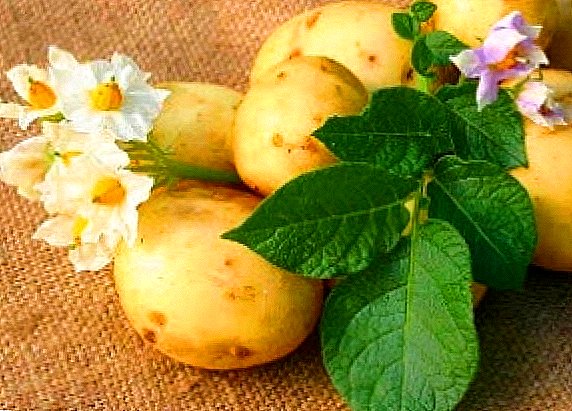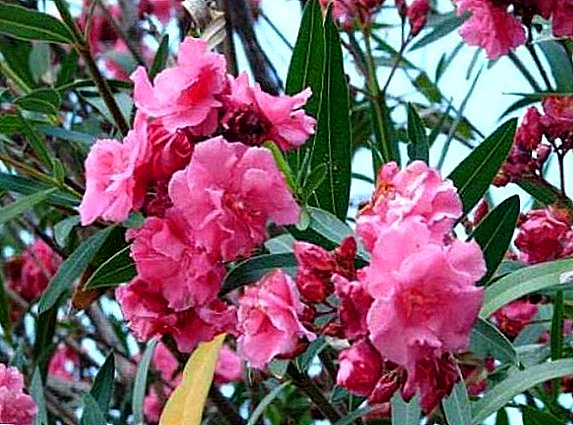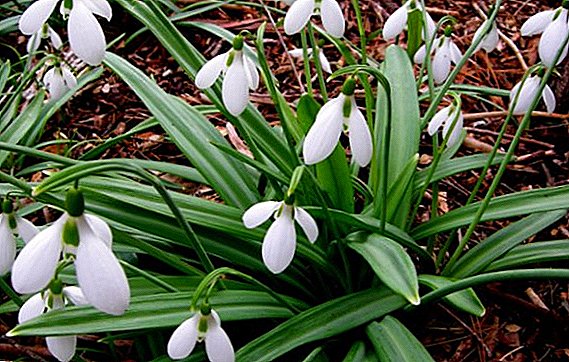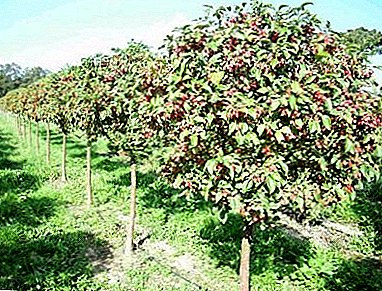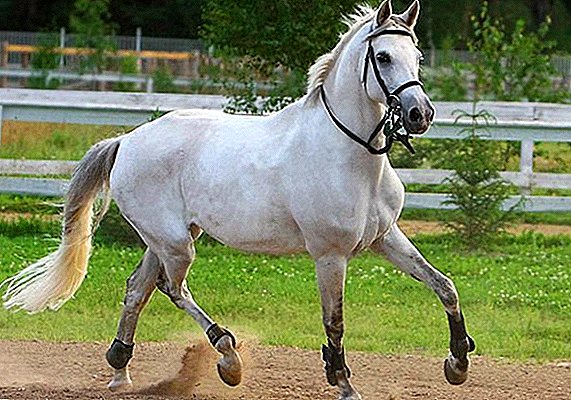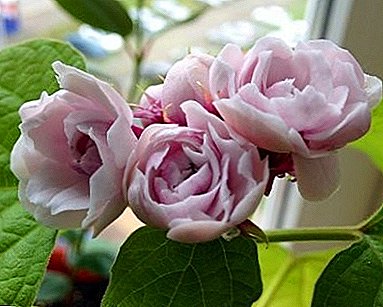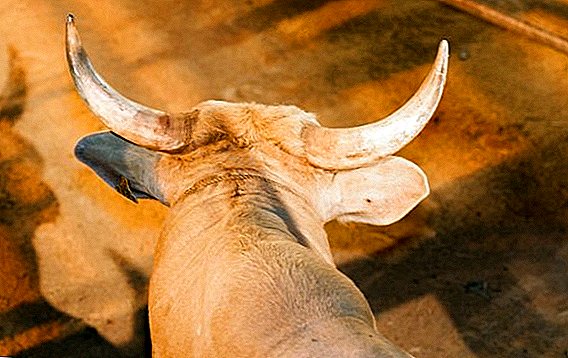 The horns on the head of the bull look very scary, and for good reason, because with their help, these animals fight and show their strength. Today we will talk about the structure and purpose of the horns of the bull, as well as the method of processing them in order to make a vessel.
The horns on the head of the bull look very scary, and for good reason, because with their help, these animals fight and show their strength. Today we will talk about the structure and purpose of the horns of the bull, as well as the method of processing them in order to make a vessel.
What are the horns of a bull: anatomical structure
The horns of the bulls cover the horny processes of the frontal bone as cover. These solid formations consist of a root, a body, and an apex. The location of the root - on the transition to the skin of the forehead. The top is a sharp free end, and the body is a section from the root to the top.
In the walls of the horns there are two layers: the base of the skin and the epidermis. The producing layer of the epidermis produces a tubular stratum corneum. The length of the horns can reach a length of 70 cm with a circumference at the base of 30 cm. Their shape is close to conical, usually they are bent by a spiral or arc.
Did you know? Calves of both sexes are born without horns, they appear in older babies at the age of two months.The surface of the horns of these animals is smooth, there are weak annual rings on it. The color of these solid formations on the bulls head is varied: from white to black. There are representatives with the spotted color of the horny processes, on which you can observe a beautiful blurry pattern.
 A - epidermis of the scalp; B - her dermis; B - the frontal bones of the skull; G - bone outgrowths of the frontal bones (horn rod); D - the connecting part of the soft layer between the horn cover and its core. The horns of adult bulls and oxen with great weight and size are of particular value.
A - epidermis of the scalp; B - her dermis; B - the frontal bones of the skull; G - bone outgrowths of the frontal bones (horn rod); D - the connecting part of the soft layer between the horn cover and its core. The horns of adult bulls and oxen with great weight and size are of particular value.What are the horns of the bull
Animal horns have several functions:
- communication (the establishment of hierarchical relations);
- protection.
These solid formations of bulls are actively used in battles with each other. With their help, they defend the territory, food or herd.
Familiarize yourself with the most well-known types of beef breeds for fattening.
Do horns grow
Bulls often have fights with each other, as a result of which their horns are damaged. This can happen through the negligence of the animal. If the problem of damage is only in the corneous case, then everything grows easily.  However, if the damage is more complex and occurred at the base, then it is very dangerous. Blood enters the frontal sinus of the animal and flows through the nose. In this case, the vet may advise horn amputation to preserve the health of the animal.
However, if the damage is more complex and occurred at the base, then it is very dangerous. Blood enters the frontal sinus of the animal and flows through the nose. In this case, the vet may advise horn amputation to preserve the health of the animal.
Which bulls have the biggest horns
Owners of the biggest horns are the watusi breed bulls. They have these solid formations on the head reach lengths from 1.5 to 2.4 m, and the weight of each is about 45 kg. The span of the horns from one tip to the other can be 2.4 m.
The horns of these animals act as radiators: the blood that circulates in them is cooled by air currents and spreads throughout the body, thereby cooling it. This is a very valuable quality, because in Africa, where Vatussi was brought out, the air temperature can reach +50 ° C.
Did you know? According to the tradition of the mountaineers, when a local youth reaches the age of 16, he is poured wine into an animal's horn. When performing this ritual in the eyes of others, he becomes an adult man.
How to handle a bull's horn for a vessel at home
In the Caucasus, the horn of a bull is used as a container for drinking. Looking at the beauty of this product, many thought about how to make such a vessel at home. Below we describe all the intricacies accompanying this process. 
Choosing the right horn for a future product
To make a vessel, to take any of the horns will not be enough, for this it is necessary that it belonged to a bovine animal. Of course, you can take it from antelope or impala, but not every person is so exotic. In our area it is ideal to use for this purpose animals such as yak, bison, buffalo or a regular bull.
At the beginning of the cup making process, a thorough inspection of the horn should be carried out: you need to find a specimen with a minimum number of cracks. It is better to use a solid formation on the head of a recently killed bull as a material. This is due to the fact that during prolonged storage the material can be adversely affected by the environment.
Learn more about the feeding habits of sires.
When the temperature drops around the horns, a stratification can be observed, and if it is unevenly moistened and dried, they simply warp. In these cases, the use of such material is not recommended.
Removal of the bone shaft
The next important step that requires careful processing is the removal of the bone shaft. If it is not visible visually, you will need to make a cut with a band saw. After that, the rod can be seen, but getting it out of the horn cover is not so easy.  To do this, you need to soak the horn, but this process is quite long and can take 2-3 weeks. You can do it easier and make digestion. This will be accompanied by an unpleasant smell, so you must turn on the hood and open all the windows.
To do this, you need to soak the horn, but this process is quite long and can take 2-3 weeks. You can do it easier and make digestion. This will be accompanied by an unpleasant smell, so you must turn on the hood and open all the windows.
Important! For the digestion of horns, use the dishes, which then will not be a pity to throw away. After this process, it will no longer be suitable for cooking.
It will be necessary to boil for 2-3 hours, after which the hot horn will be removed from the container and knocked on the wooden surface until the rod falls out. You can also use a long screwdriver to remove the rod, with which you need to clean the inside of the cornea case.
Grinding inside and outside
Before you begin grinding, let the horn cool down so as not to damage the material for the future vessel.
Internal and external grinding is carried out using such tools:
- sandpaper;
- paste GOI;
- pumice paste;
- felt;
- grinding machine.
The goal at this stage is to polish the surface to shine. The outer part will not cause much difficulty. When using a grinding machine, you must be extremely careful not to overdo it.  In the absence of the machine, the process will be longer, in this case it is necessary to use sandpaper of different grit, starting with a large one and ending with a small one. First, inside the horn you need to go through the scraper, and then make your own grinding tool.
In the absence of the machine, the process will be longer, in this case it is necessary to use sandpaper of different grit, starting with a large one and ending with a small one. First, inside the horn you need to go through the scraper, and then make your own grinding tool.
Important! Poor processing of the inside of the horn can lead to an unpleasant taste when pouring a drink into the jar.
To do this, take a piece of hard wire and secure it with sandpaper. After that, a piece of wire is fixed in the drill and, thus, the inner part of the horn cover is processed. For the final shine GOI felt and paste are used.
Often, craftsmen believe that the vessel should be white, so it is bleached with various special substances. Chemicals can have an aggressive effect on the material, so before you bleach the horn itself, it is recommended to test an unnecessary piece of horn bone as a material.
Video: processing of cattle horns
Drawing pattern
You can put on the vessel a beautiful grooved, polished or engraved pattern. However, this business requires professional skills. You can also decorate the product with a chain or lace embossing. As a result, you will have a beautiful vessel from which you can drink wine, as well as use it to decorate the interior.
The purpose of the horns for the bull is not only to decorate his head, they also serve as a powerful tool of attack. However, people have long got the hang of applying them for decorative purposes.
Using the technological process of processing these solid formations on the head of the animal, you can make a vessel for fine drinks and use it in the household.


